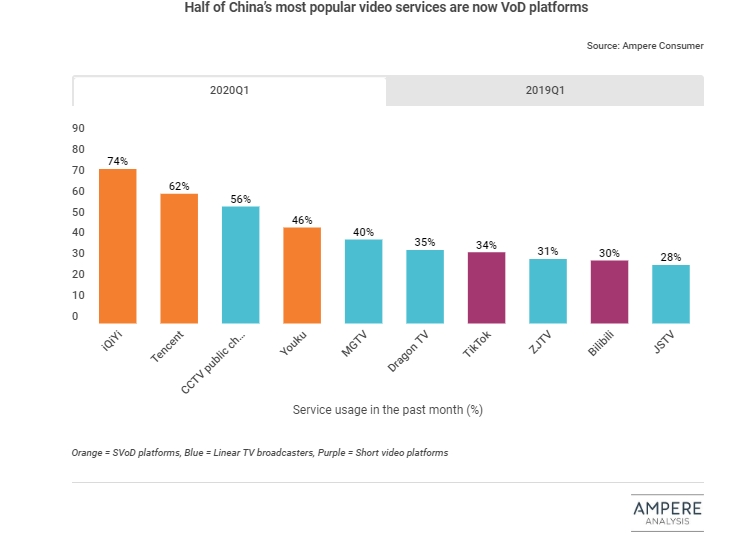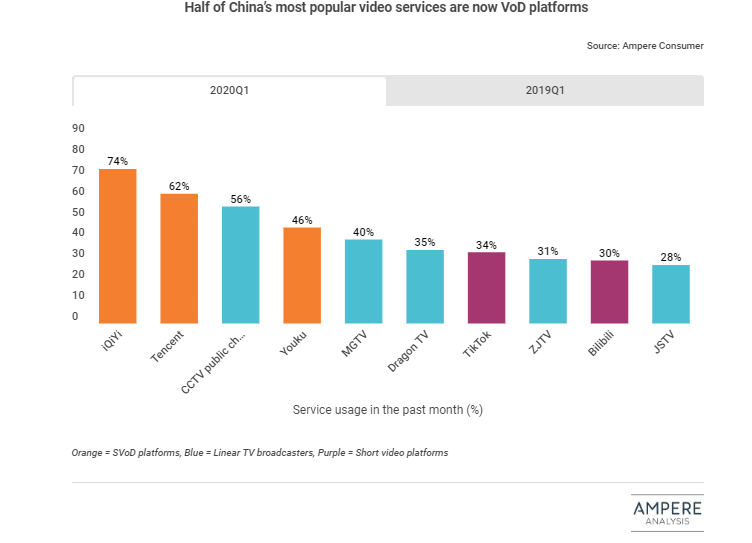
 Chinese content consumption has shown a distinct shift during 2020Q1, when a series of lockdown measures were put in place in China, compared to 2019Q1. The three largest SVoD platforms, iQIYI, Tencent Video and Youku, continued to be the most popular services in China, although the combined usage rate of the three services remains roughly the same year to year. In comparison, China’s public broadcaster CCTV has seen its usage rate surging from 35% (ranking 7th) to 56%, becoming the third most used service during the COVID-19 pandemic.
Chinese content consumption has shown a distinct shift during 2020Q1, when a series of lockdown measures were put in place in China, compared to 2019Q1. The three largest SVoD platforms, iQIYI, Tencent Video and Youku, continued to be the most popular services in China, although the combined usage rate of the three services remains roughly the same year to year. In comparison, China’s public broadcaster CCTV has seen its usage rate surging from 35% (ranking 7th) to 56%, becoming the third most used service during the COVID-19 pandemic.
However, two online video platforms have taken over viewership from regional linear TV broadcasters. TikTok and Bilibili have now risen to be among the top 10 most popular services in China and enjoy a comparable viewing rate (around 30-35%) with the four largest regional broadcasters MGTV (Hunan), Dragon TV (Shanghai), ZJTV (Zhejiang) and JSTV (Jiangsu). The leading short-form video platform, TikTok, has capitalised on the closure of cinemas in China by screening two feature films and making them available to all viewers. TikTok has also opened live streaming windows for video bloggers to showcase products and stimulate online shopping during lockdown. All these moves have in turn led to a rapid growth of viewers, with TikTok hitting a record 400 million daily active users (DAU) at the peak of the COVID-19 lockdown in China.
Bilibili features three types of content in its core offering: manga and animation; games; and user-generated videos, which accounts for the majority of its total catalogue. During China’s lockdown, Bilibili has strengthened its initiative of encouraging and rewarding video bloggers to create content at home. It has also built an online education platform within its service offering live streaming and on-demand videos for students. All these have benefited its content library and user base expansion. Bilibili had over 1 million monthly active content producers creating over 2.8 million videos on an average monthly basis by 2019, up 80% and 66% respectively from 2018. It also attracted over 130 million monthly active users (MAU) in 2019Q4, up 40% from 93 million MAUs in 2018Q4. Ampere estimates Bilibili will have further boosted this number to over 141 million during COVID-19 lockdown in China.
